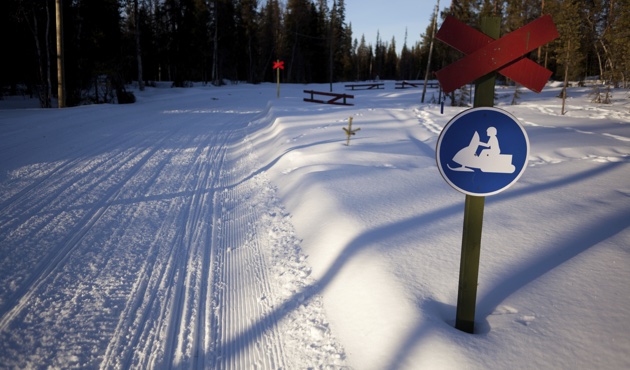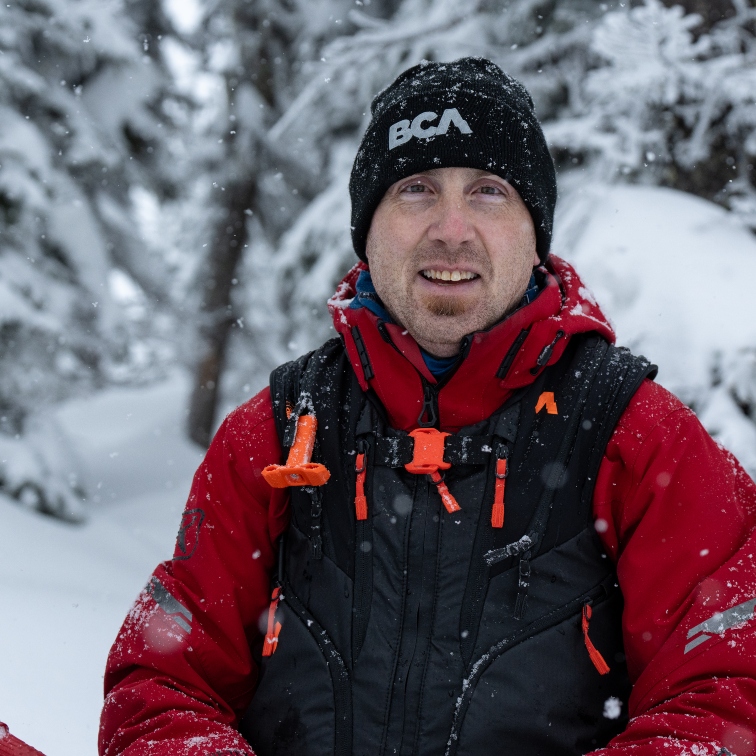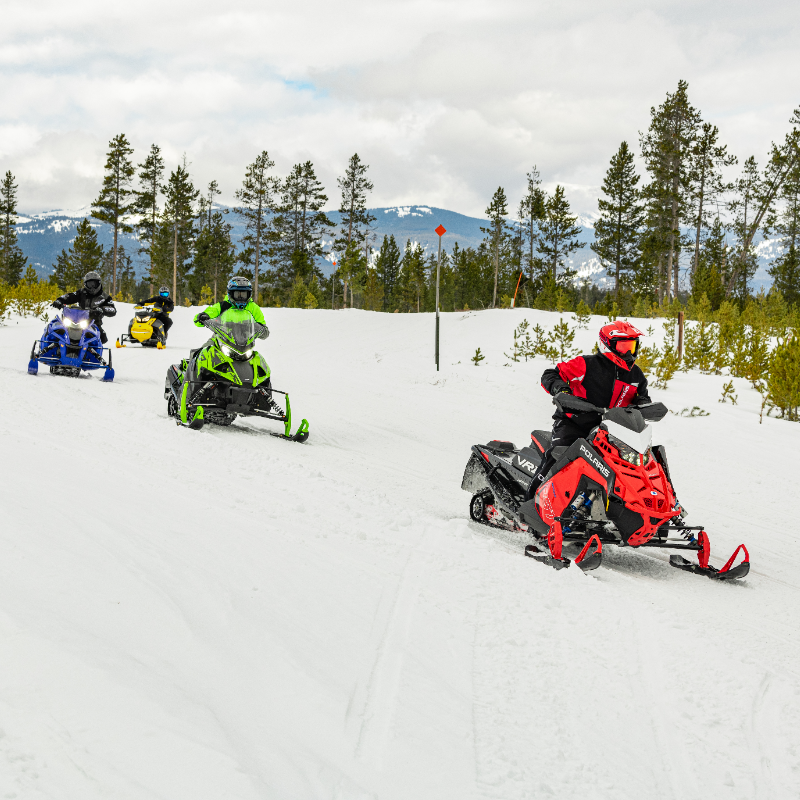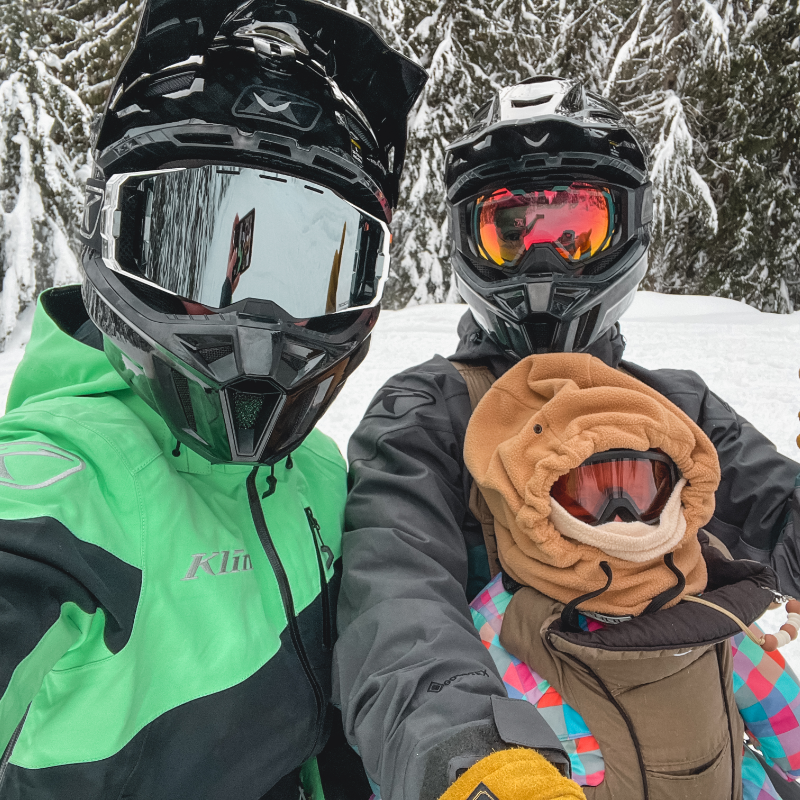Across Canada, active volunteers build and maintain an astounding network of ride-worthy trails. These trails provide endless enjoyment, but all riders should understand safety and stewardship when using them. It goes without saying that we should never ride under the influence of alcohol or drugs, but here are some other tips to consider before heading out on the open trail.
Excessive speed is stupid
You’ll be able to identify them immediately. Heroes in their own mind, corduroy racers throw common sense to the wind and pin the throttle wide open. Speed is responsible for the majority of deaths and injuries on snowmobile trails across Canada. But speed demons don't just endanger their own lives: anyone on the trail is at risk, from small children to seniors out enjoying the day.
Speed can destroy the hard work of grooming volunteers, whooping out the trail unnecessarily and creating icy inclines. Always abide by posted speed limits, and in the event there is no signage, use common sense and respect to dictate your speed.
Stick to the trail
Many trail systems have special management agreements in place. Some navigate through private land or protected habitat, with fragile agreements in place that can be revoked at any time.
“Some of our trails go through lands that are controlled by trappers," said Troy Lorencz, president of the Peace Valley Snowmobile Club. "It is not only disrespectful to go off trail in these areas, (but) it can also be dangerous should you happen upon traps set."
Trappers in the Peace region took time to reach out to Peace Valley Snowmobile Club to demonstrate the types of traps within their management areas, in hopes of working with the club to solidify a respectful, safe relationship. Should riders choose to go off trail, the trappers' association would have no other recourse but to shut down access, further limiting the areas snowmobilers can ride. This applies to all private agreements between snowmobilers and landowners.
Be considerate
Stay to the right of the trail, and give uphill riders the right of way. Reduce your speed when you encounter oncoming traffic, snowmobiles that are parked, or other trail users such as cross-country skiers, snowshoers, dog sleds and hikers. Always yield the right-of-way to volunteers out grooming the trail. Only pass when clear contact has been established and the operator waves you around.
Never ride alone. Accidents can happen and machines can break down, so always use the buddy system. Develop a ride game plan before heading out and let a friend or loved one know of this plan. Should you become lost or stranded, someone back home will know your general location, which will speed up search efforts.
Keep communication open
Always watch for the rider behind you. Before any junction, stop and ensure everyone is together. It’s wise to have a designated leader and tail for the journey. The leader will be the one with the most experience and knowledge of the trail system. The tail will also be a rider of experience, who keeps everyone sandwiched in between.
Use non-verbal communication
An arm up with thumb pointing backwards will let oncoming riders know there is traffic behind you. A show of fingers to indicate the numbers behind with the last rider showing a fist to indicate he is last will also facilitate safer transitions. An arm straight up in the air will allow riders behind to know you are stopping. There are other basic hand signals for turning and slowing.
Embrace technology
Communication devices such as cell phones, walkie talkies, inReach and SPOT are excellent choices to keep you in contact with your group or those back at home. GPS devices with bread crumb abilities can be a life saver should you become lost or disoriented. Make sure your batteries are fully charged prior to your ride, and take time to do an inventory of the technology each rider has within your group.
Preparation is key
Take time to plan your ride so you know exactly what you are in for. Running out of gas in the middle of nowhere is fun for no one, and potentially fatal should you be stranded overnight in harsh winter conditions. You may need to pack extra fuel, or you may need to choose a route that accommodates all skill levels in your group, but plan ahead for safety's sake. Always be sure to check your local weather forecast.
Dress for success
Dress in layers, but never rely on cotton for any layer. Cotton acts like a sponge, holding sweat close to your body and inviting in hypothermia. Prevent frostbite and frost nip by wearing gear that could save your life. Balaclavas are an excellent choice on extreme winter days. For more information and essential tips for staying warm while riding, check out the article Dressed for success.
Pack the essentials
A quality first aid kit, food and hydration are necessities. Do you know how to start a fire in the winter? It seems like a simple task, but in snow and frigid temperatures, you’d be surprised how difficult it can be. Pack more than one fire-starting mechanism and learn how to start a fire that will last in winter conditions.
Extra socks and gloves along with a toque (beanie for our American readers) will help keep you warm. Many forget about head coverage, as we wear helmets while riding. But that helmet will feel like it weighs a hundred pounds should you be forced to walk out to safety. For a detailed description of what to pack, check these words of wisdom from safety expert Lori Zacaruk: Do you really need all that stuff?
Ride within your ability
It takes time to develop the skills needed to be a polished snowmobiler. Ride within your skill set. Prepare for approaching inclines by speeding up before you approach the steep climb. Goosing the throttle mid climb results in a spinning track, which creates a sheet of ice—robbing you of momentum and creating danger for other riders.
Group leaders, understand the skill set of your entire group and formulate a game plan that accommodates everyone. Encourage open communication and check in with your group to identify if riders are scared, hurt or cold. If you are learning and feel unsure or frightened, communicate your fears to your group leader. Everyone has to start somewhere, so don’t feel shy about sharing concerns with your group. They will help you learn and develop the skills needed to fully enjoy your experience.
Your local club is your best resource when it comes to understanding the trail systems in the area you wish to explore. Most clubs will post trail information at each system head, so take the time to read it. Support these hardworking clubs, for they are the ones spending the time and money to create and maintain these trails.







